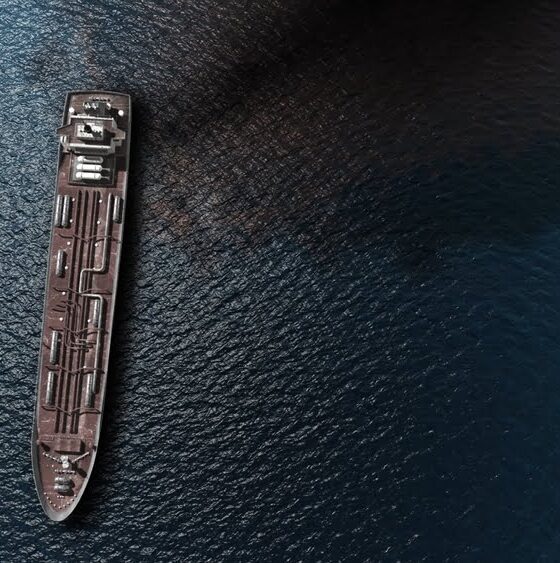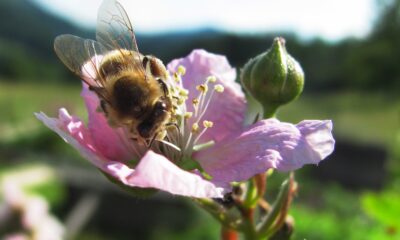

Environment
Spill Science: The Impact of Oil on a Waterway
It comes as no surprise that oil is toxic and harmful to both plants and animals, as well as humans. This is because it can be threatening to natural habitats and cause all kinds of damage to the environment if exposed. This is even more true when oil gets into a waterway way as it not only contaminates the water, but it can spread faster too.
With drinking water for both humans and animals coming from rivers, streams and groundwater, it’s important that these are protected from this kind of pollution. But you’d be surprised how quickly and easily an oil spill can reach a waterway.
But what actually happens if oil gets into a waterway, and what should you do if you know of a spill that’s wreaking havoc on the local environment?
Well, that’s exactly what we’re going to discuss in this guide. Read on to find out more.
The current impact of oil on the environment
Did you know that just one liter of oil can contaminate as much as one million litres of water? This is a pretty concerning statistic, especially given that oil has been amongst the top three pollutants in the UK for the last five years.
This is largely because many drains lead directly to water sources such as rivers, streams or lakes. Therefore, if oil gets into a drain, it can quickly spread to nearby waterways. This is essentially the same as just pouring the water directly into the water source.
And sadly, it’s all too easy for oil to find its way down the drain if oil spills are not managed and cleaned up quickly and correctly.
When oil meets water
Once in the water, oil can have a devastating impact on the surrounding environment, and we’re now going to look at what can happen in more detail.
1. It harms the wildlife in the water
When oil enters the water, it spreads over the surface, creating a layer that stops oxygen from getting in. Understandably, this has an impact on any plants or wildlife that live within the water, suffocating those that don’t have access to enough oxygen. What’s more, it stops plants from photosynthesising, causing them to eventually die off.
Not only this, but any wildlife that comes into contact with the oil can become covered in the harmful, oily substance. This can be very hard to remove and, over time, can make the animals unwell. In the worst cases, it can even cause them to die.
For example, wildfowl might find the oil damages the waterproofing of their plumage and mammals in the water, like voles, could ingest the contaminated water supply and become ill.
The same applies to insects which can quickly disappear as a result of an oil spill, and these are very important for maintaining the ecosystem in and around the water. Even oil in the nearby soil can coat or kill small organisms that are vital for keeping environmental balance.
2. It disrupts the food chain
Everything we’ve discussed is an issue in its own right, but it also disrupts the larger food chain in the nearby area too. Without insects and smaller animals to feed on, larger animals will suffer. That, or larger animals that feed on insects, smaller animals or plants near the water can become ill if they eat something that has been contaminated with oil.
As you can see, this initial oil spill is wreaking havoc on the local wildlife, and the knock-on effect is spreading very quickly.
3. It takes a long time to recover
One of the worst things about oil in a waterway is that this is not a one-day issue. Not only is oil tough to clean and therefore takes longer to deal with, but it also takes a while to undo all the damage to the nearby plants, animals and microorganisms. This is particularly true if the ground and soil around the water have been contaminated too.
4. Humans are impacted to
Of course, it’s not just animals and plants that are going to be impacted. Oil contamination can also make its way into drinking water supplies, making them unsuitable for irrigation and unfit for human consumption. This can be a very expensive issue to put right and can temporarily stop water production from that source.
Reporting an oil spill
If you spot an oil spill elsewhere or you have one on your property, it is vital that you report this right away, especially if you are near a waterway. The good news is there are several helpful websites and resources that can support you in quickly reporting the issue.
Oil care has a number you can contact, or you can use the Gov website. Alternatively, get in touch with the local council, and they will be able to point you in the right direction. They will be able to take the necessary steps to test, clean and manage contaminated waterways.
Clean up the spill
Finally, wherever possible, you should attempt to manage the spread of the oil immediately if this is on your property unless this means putting yourself in harm’s way, of course.
If you think the spill is already contaminating the ground or it’s starting to spread, absorbent materials like sand and cat litter can help to stop or slow this down. Alternatively, if you can see where the leak is coming from, put a bucket or container underneath to stop this.
Never wash oil away down a drain because, as we’ve said, these can be directly linked to nearby water sources and can harm the local wildlife. It’s also important that if you use any materials to manage or clean the spill, you then dispose of these properly.
If the spill has taken place on your property, then you may need to get any damaged oil tanks replaced and a professional spill remediation service provider in to ensure the spill is cleared completely and that any contaminated soil is also handled.






























